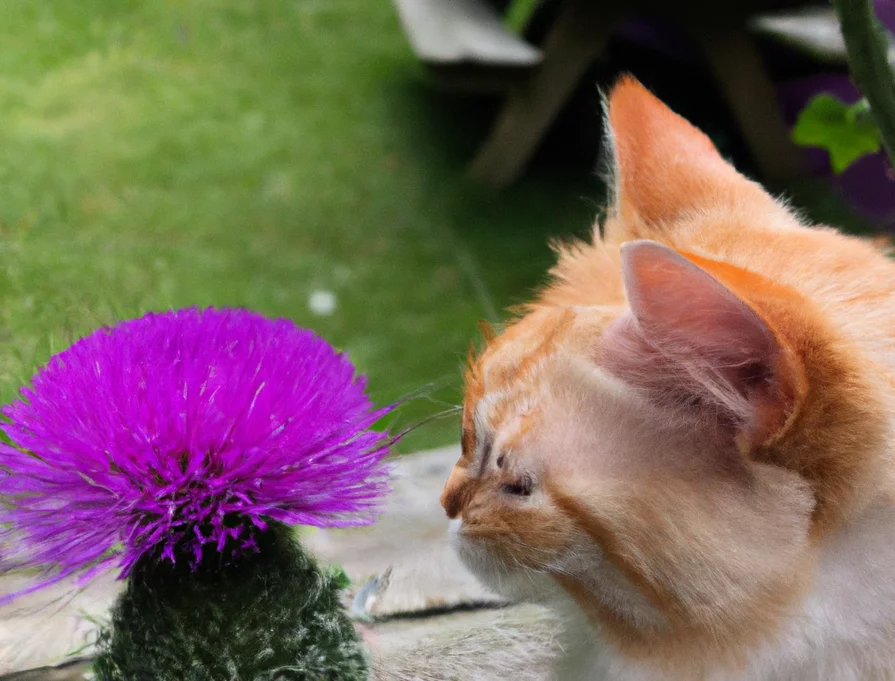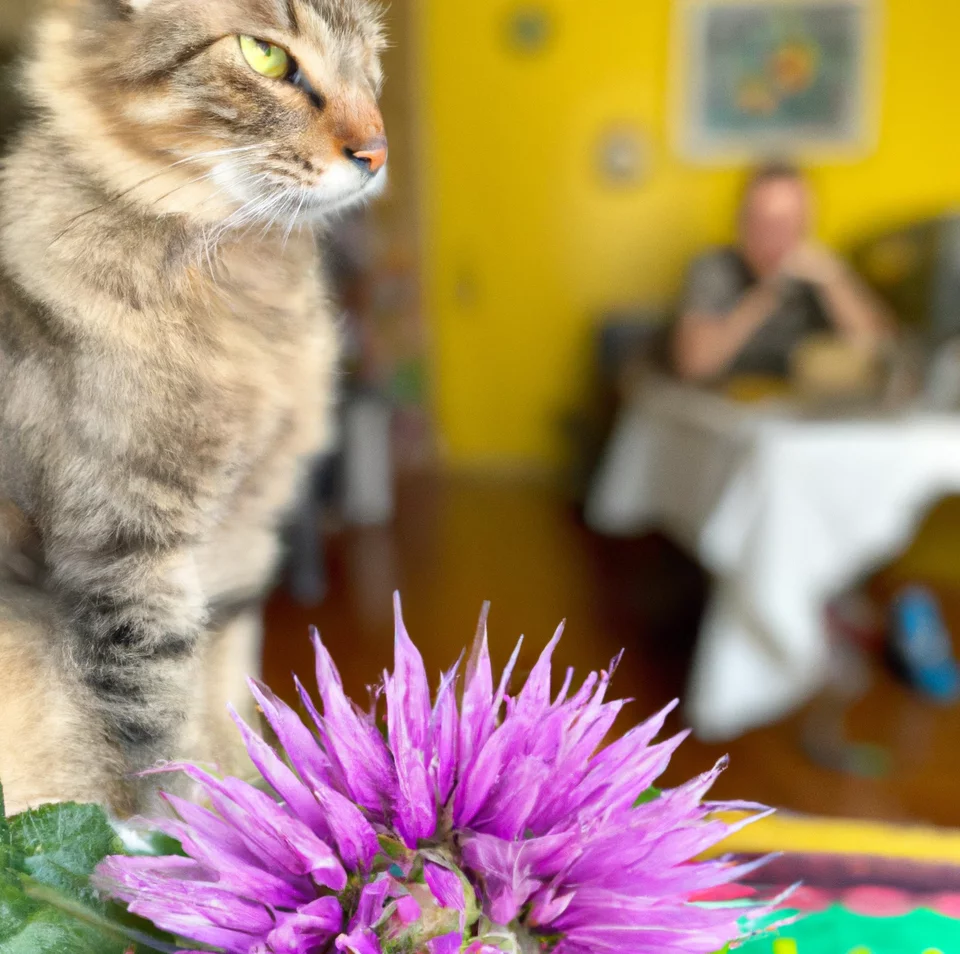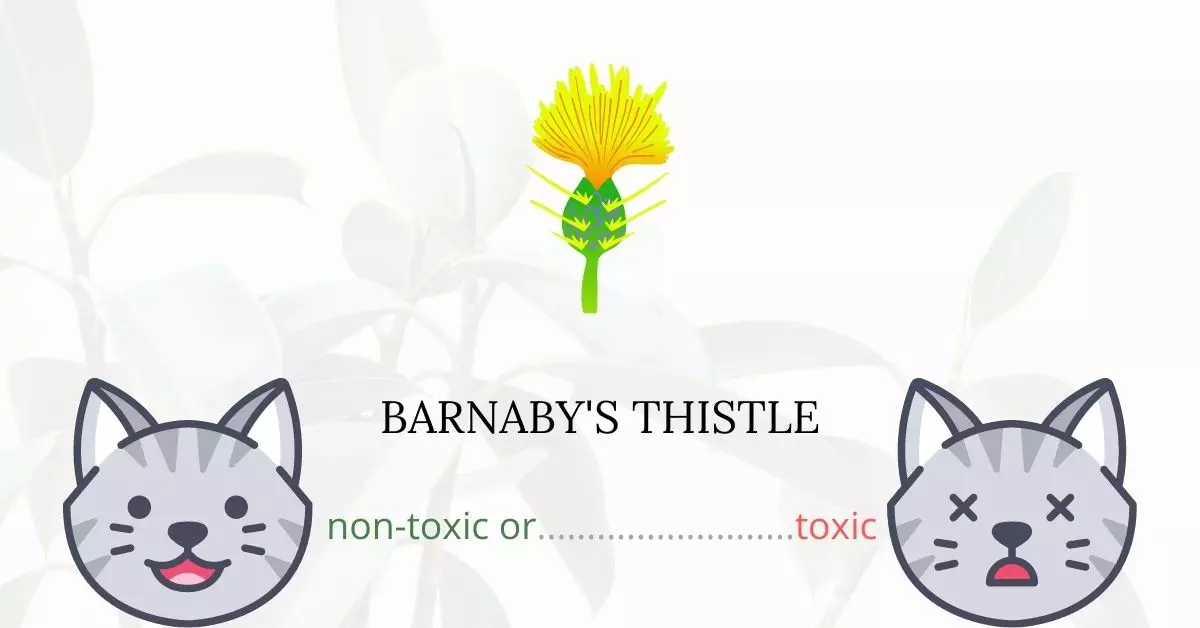Barnaby’s Thistle, also commonly known as Yellow Star Thistle, is generally considered to be non-toxic to cats.
To confirm this, we collaborated with a group of experienced DVMs (Doctors of Veterinary Medicine) who bring a wealth of knowledge and expertise about various plant species and their impacts on pets, particularly cats. This collaboration enables us to offer accurate, reliable, and the most up-to-date information on the potential risks associated with various plants, focusing in this instance on Barnaby’s Thistle. Furthermore, our information is substantiated by extensive research from high-authority websites like the ASPCA and PetMD, ensuring the data we provide is credible and trustworthy. According to the American Society for the Prevention of Cruelty to Animals (ASPCA) Poison Control Center’s list, this plant is categorized as a non-toxic plant and is safe for both cats and dogs, although it is toxic to horses.
Can Cats Eat Barnaby’s Thistle?

If your cat has consumed a small portion of Barnaby’s thistle, it should not cause you to worry. However, since cats are genetically carnivores, eating plants is not advisable for them.
Eating a huge quantity of plant material may cause cats to experience stomach discomfort. They may experience mild vomiting and diarrhea. Some cats may also show signs of drooling and oral irritation.
What is Barnaby’s Thistle?

Scientifically known as centaurea solstitialis, Barnaby’s thistle is a member of the family Asteraceae, native to the Mediterranean Basin region. The plant is also known commonly as golden star thistle, yellow cockspur, and yellow star thistle.
Barnaby’s thistle is a prickly winter annual knapweed species. It develops a rosette of non-spiny leaves during the vegetative stage. As summer approaches, it grows a flowering stalk that produces multiple spinous capitula with numerous yellow flowers. Insects pollinate the flowers within the capitula, and each capitulum produces a mixture of pappus and non-pappus seeds. It is an annual semelparous species that die after reproduction is complete, which is usually by the end of the summer.
Barnaby’s thistle is also considered an invasive weed across its native European range (e.g., Turkey, Greece, Italy, France, and Spain), hence it prefers severely disturbed ruderal environments, such as roadsides and cereal crop margins. After being introduced as an exotic species in several parts of the world, it has developed local adaptations to the various habitats colonized.
Keeping Cats Away From Barnaby’s Thistle

Since Barnaby’s thistle is commonly found outdoors, cats who like wandering outside are more likely to encounter this plant.
The best way to keep them away from Barnaby’s thistle and other potentially toxic plants is to keep them safe and comfortable indoors. Engaged and mentally-stimulated cats are less likely to stray away far from home.
If you have houseplants, it is best to place them in a space that your cat cannot access. You can also try building a plant terrarium indoors.
Plants to Avoid For Your Cats
If you are a cat owner and unsure if the plants growing in your yard are harmful to your cats, check out this list of toxic plants for cats. You can also check our list of non-toxic plants for cats.





